On October 11, 1865, several hundred native Jamaicans marched into the town of Morant Bay, the capital of the predominately sugar-growing parish of St. Thomas, to demonstrate against injustices. Several members of the crowd, on both sides, were killed. In the days that followed, the British Army was called in and over 500 people were murdered along with hundreds wounded.
We recently acquired an album with 165 rare albumen photographs: 59 of the Morant Bay Rebellion in Jamaica (1865), 32 photographs of the Indian Northwest Frontier Hazara Campaign (1867-1870), and 64 others depicting Malta, Ireland, Guernsey, and elsewhere. The prints are primarily by unidentified amateur photographers, although there are 8 by Samuel Bourne, 5 by G. Sommer, 3 by William Lawrence, several by Francis Frith.
This post will describe the 59 photographs relating to the 1865 Morant Bay Rebellion and future posts will deal with the other sections. The album’s careful compilation includes detailed notes of the people, places, and dates relevant to each photograph. It may be the work of a surgeon in the British Army, Alexander Dudgeon Gulland, MD Edinburgh University, who appears in the album. Appointed Staff Assistant Surgeon in 1854, he served with the 6th Foot which was in Jamaica in 1865 and is listed as having been in China from 1860-62 and Hazara in the Northwest Frontier in 1868 (See: Hart’s Army Lists and Returns Relating to Medical Officers (Army) 1854). The Jamaica section of this album begins with photographs of the Morant Bay military base including a view from the Surgeon’s Quarters and general views of the area to set the scene.
My thanks to Dr. Mimi Sheller, Professor of Sociology, Director, Center for Mobilities Research and Policy Department of Culture and Communication Drexel University, for the following summary of these events.
The events at Morant Bay in 1865 followed on the heels a period of public meetings known as the Underhill Meetings, and peaceful expression of grievances through petitions. Complaints included a series of economic issues related to wages, land tenure, access to markets, and labor rights; political issues related to unfair taxation, no justice in the courts, and elite-biased government policies; and civil issues that included voting rights, and access to healthcare, education, and land. In that sense it was not a riot so much as a social movement, which was rejected by the Governor and finally turned to violence against the representatives of the local government.
Here is a basic description of the facts of what took place before the government sent in military reinforcements to “suppress” the rebellion. During a trial for trespass held in the Morant Bay Court House on the 7th of October 1865, James Geoghagan disrupted proceedings by shouting that the defendant should not have to pay the costs. He was ordered out of the court. When he did not go quietly the Judge ordered his arrest. However, his sister Isabella challenged the police, and when they got outside a “mob” including the Native Baptist deacon Paul Bogle and some of his followers from the hamlet of Stony Gut rescued him from the police. The following day the police went up to Stony Gut to arrest those involved, but the policemen were instead captured and made to swear an oath to “cleave to the black”. To continue reading Dr. Sheller’s description, click on the extended entry link below.
Portraits of key figures from the rebellion tell more of the story. Among them are a page of portraits of “The Victims of the Jamaica Rebellion of 1865”, a portrait of George William Gordon who is now considered a Jamaican national hero, portraits of unidentified Jamaican natives, and of British Army officers. Listed among the victims are not only those who were murdered but also those in the colonial government who were later tried for murder and acquitted.
It is probable that these portraits were gathered after the rebellion and some may have been taken by the only commercial studio we can identify in Jamaica at the time, run by Adolphe Duperly (1801-1865) and taken over by his son, Armond.
Two small photographs of Jamaican Maroons, including one of Maroons in camouflage with Colonel Fyfe, reflect an interesting social dynamic in the rebellion. Originally runaway slaves who set up communities that engaged in guerrilla warfare against the British, the Maroons eventually cooperated with the British authorities after they started to deport them and confiscate their land in 1796. Used to suppress slave revolts until 1838, they were also used to suppress the 1865 rebellion.
For more information, see “The Town of Morant Bay, Morant Bay, Jamaica,” Harper’s Weekly, December 23, 1865.
“Morant Bay, Jamaica, the Scene of the Negro Insurrection,” The Illustrated London News, November 25, 1865.
Gad Heuman, The Killing Time, The Morant Bay Rebellion in Jamaica (London: Macmillan, 1994) Firestone F1866.H48 1994b
Arvel B. Erickson, “Empire or Anarchy: The Jamaica Rebellion of 1865,” The Journal of Negro History, 44, no. 2 (April 1959): 99-122.
Henry Bleby, The Reign of Terror: a Narrative of Facts concerning Ex-Governor Eyre, George William Gordon, and the Jamaica Atrocities (London: s.n., 1868). Firestone HF 1569.E53
On the 11th of October, the day of a local vestry meeting, several hundred people marched into the town of Morant Bay, pillaged the police station of its weapons, and then confronted the volunteer militia who were protecting the vestry meeting. According to Gad Heuman (1994: xiii), “Fighting erupted between the militia and the crowd and, by the end of the day the crowd had killed eighteen people and wounded thirty-one others. Seven members of the crowd died. In the days which followed, bands of people in different parts of the parish killed two planters and threatened the lives of many others.”
The crowd that marched on Morant Bay was said to have been led by Mrs. Letitia Geoghagan, the mother of James, Isabella, and Charles; both she and one of her sons were executed following the imposition of martial law. Here is the description in the evidence given to the Jamaica Royal Commission, which is a significant example of the importance of women as popular leaders in Jamaica:
Afterwards we saw them coming round the corner into the Parade, with guns and bayonets fixed, sticks, swords, machettes, and lances; they were advancing, blowing shells and playing drums. How near did they get to you before anything was done? — About 20 yards, and a woman named Geoghagan…— Is that a person now living? — No, she is dead. What did she say or do? — She first fired a stone, and several other women followed her, and then the men rushed right in… Whereabouts was this woman when she threw the stone? —She was just in front of us, in the north part of the Parade. Did she come up with the people? — She was the guide and led them; she came up in front of them. But they did not want a guide? — She was a sort of leader. Well, she threw the first stone? — Yes. Then other women threw stones? — Yes.

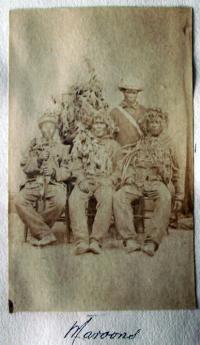
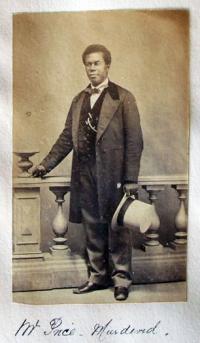
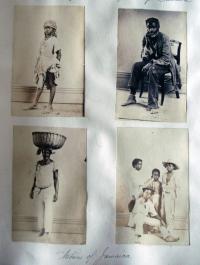


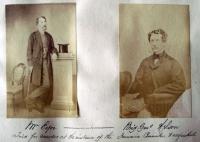
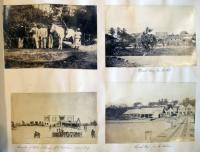
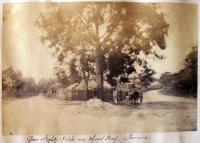
This is really interesting!
Thanks for posting the
info & photos ~ peace
What a great find! This kind of visual data adds a whole other dimension to the existing knowledge about the rebellion. Will all the images be available via the web after they are processed? Was there accompanying documentation that help to contextualize the images? Thanks much!
This is a fantastic photographic document. However, the accompanying text describing the events at Morant Bay is slightly inaccurate, which I say as someone who has read through most of the primary sources. Might I also suggest my own book, based on a PhD dissertation, which touches upon the rebellion, and especially the events leading up to it:
Mimi Sheller, Democracy After Slavery: Black Publics and Peasant Radicalism in Haiti and Jamaica (Macmillan, 2000; University Press of Florida, 2001).
Thanks for making this document available to researchers!
Mimi Sheller
Professor of Sociology
Drexel University
Not only very informative, but extremely refreshing! Thanks a lot.
Wonderful find for all of us who enjoy knowing more about Jamaica's long road to freedom and democracy.
Where was it hidden? Would love to see them in an exhibition in Morant Bay or the National Library of Jamaica.
Many of the Victorian photographs shown here were actually previously published in an excellent illustrated booklet on the Morant Bay Rebellion, which was printed in Kingston, Jamaica in 1965 to commemorate the Centenary of the Rebellion. Sadly the booklet has never been reprinted and I don't know whatever happened to my copy of it. Perhaps this will encourage the National Library of Jamaica to reprint
new copies.
This is a great find, It makes me very proud to be born in Jamaica from stock that shows guts and determination.
We do have a great history, and it should be more exposed for the world to know.
Thanks for the privelidge.
This document is very informative; it adds to my research on the events of 1865 in Morant Bay and particularly on Paul Bogle--my ancestor.
What always gets to me when I read the history of the Morant Bay rebellion is the minimiziation and in some cases complete exclusion of the maroons, who aided and abetted the slaughter of many persons of colour, and of course the capture of Paul Bogle.
This is pretty interesting
A remarkable discovery which I find really fascinating.
these info is so refreshing to me as i have learned about the rebellion in school
A great find. Such photos really bring to life, an important episode in our history showing how civil unrest could be brutally suppressed by our former colonial masters. Such a collection or copies of it, ought to be put on display on the anniversary of the Rebellion so that Jamaican, especially younger ones who know little of it, can see the faces of persons involved in it.
This is a great find, I did this history in school.
I will pass this on to my younger ones who did not know of this.
So proud to be a Jamaican.
Hello Enid,
I just want to say that I have also learned a great deal through this site, as I am embarking on research concerning the Jamican Rebellion. My father was born in Kinston and my mother is American. I love Jamaica and I always feel at home when I visit each year.
I love the country and my heart aches fore the injustices that have and are still taking place there. I am amazed that you are a relative of the brave and great Paul Bogle. God bless you and the family. I am honored to be able to send you an email. He is in Heaven as a great warrior and Jamaica is home. God bless.
By the way, I am 24 years old, female and would love to meet you one day. Thank you
bwaseme@yahoo.com